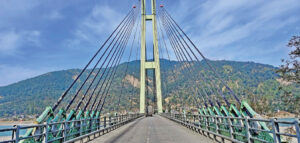
Science Editor, Alison Francis, Senior Science Writer, Dec.24: A Nasa shuttle is endeavoring to make history with the closest ever approach to the Sun.
The Parker Sun oriented Test is diving into our star’s external environment, persevering brutal temperatures and extraordinary radiation.Shuttle endeavors closest ever approach to Sun.
It’s out of communication for a few days amid this burning hot fly-by and researchers will be holding up for a flag, anticipated on 27 December, to see if it has survived.Shuttle endeavors closest ever approach to Sun.
The trust is the test seem offer assistance us to way better get it how the Sun works.
Dr Nicola Fox, head of science at Nasa, told BBC News: “For centuries, individuals have considered the Sun, but you do not encounter the climate of a put until you really go visit it.Shuttle endeavors closest ever approach to Sun
“And so we can’t truly involvement the climate of our star unless we fly through it.”The shuttle will be flying into the Sun’s external air. photo:NASAShuttle endeavors closest ever approach to Sun.
Parker Sun powered Test propelled in 2018, heading to the middle of our Sun oriented System.Shuttle endeavors closest ever approach to Sun.
It has as of now cleared past the Sun 21 times, getting ever closer, but the Christmas Eve visit is record-breaking.
At its closest approach, the test is 3.8 million miles (6.2 million km) from our star’s surface.
This might not sound that near, but Nasa’s Nicola Fox puts it into viewpoint: “We are 93 million miles absent from the Sun, so if I put the Sun and the Soil one meter separated, Parker Sun based Test is four centimetres from the Sun – so that’s close.”
The test will have to persevere temperatures of 1,400C and radiation that may fatigue the onboard electronics.
It’s ensured by a 11.5cm (4.5 inches) thick carbon-composite shield but the spacecraft’s strategy is to get in and out fast.
In truth, it will be moving speedier than any human made protest, rushing at 430,000mph – the comparable of flying from London to Modern York in less than 30 seconds.So why go to all this exertion to “touch” the Sun?
Scientists trust that as the shuttle passes through our star’s external air – its crown – it will illuminate a long standing mystery.
“The crown is truly, truly hot, and we have no thought why,” clarifies Dr Jenifer MIllard, an space expert at Fifth Star Labs.
“The surface of the Sun is almost 6,000C or so, but the crown, this shaky external air that you can see amid sun based shrouds, comes to millions of degrees – and that is encourage absent from the Sun. So how is that climate getting hotter?”
The mission ought to moreover offer assistance researchers to superior get it sun based wind – the steady stream of charged particles bursting out from the corona.
When these particles connected with the Earth’s attractive field the sky lights up with astonishing auroras.
But this so called space climate can cause issues as well, thumping out power-grids, hardware and communication systems.
“Understanding the Sun, its movement, space climate, the sun based wind, is so vital to our regular lives on Soil,” says Dr Millard.
The climate has changed from western Nepal. The Division of Hydrology and Meteorology, Climate Determining Division has expressed that the climate has changed from Monday evening in the Distant West Territory and will slowly spread over the country.
Meteorologist Rojan Lamichhane of the division said that it will too spread to Karnali Area today evening time and will continuously reach Gandaki and Lumbini. He said that in spite of the fact that the framework will debilitate to some degree as it moves upward, its impacts will be felt. Lamichhane said that the climate will stay cloudy until this evening and will debilitate to some degree from Wednesday. Concurring to him, there has been no rain however. He educated that there is a plausibility of snowfall in the tall sloping and hilly zones at night and in the morning and scattered rain in a few other areas.
According to the points of interest made open by the division on Monday evening, the nation is as of now beneath the impact of westerly winds and the western low-pressure framework will influence the Distant West Area, Karnali Territory, Lumbini Area and Gandaki Province.
Currently, the climate in the Distant Western Territory of the nation is for the most part cloudy, whereas the uneven zones of Koshi Territory, Gandaki Territory, and Karnali Territory are somewhat cloudy, and the rest of the locale is basically clear.
The division has educated that there is a plausibility of light rain in a few places in Bagmati Area and Madhes Area and one or two places in Koshi Territory in the another 24 hours.
Cold climate starts to increase
With the alter in the climate, the cold climate has begun to increment once more in Nepal. Whereas the cold climate expanded strongly in Nepal in the final week of final Mangsir and steadily diminished, the cold climate has begun to increment once more from Monday, said Lamichhane, a meteorologist at the division.
According to the department’s records, the least temperature in Kathmandu is as of now 4.3 degrees. Prior, the temperature in Kathmandu was 4.8 degrees on Poush 4.
Similarly, the least temperature in Jumla come to short 7.8 degrees on Monday, whereas it was short 7.2 degrees there on Poush 4. The least temperature in other zones is moreover diminishing, concurring to the climate determining division.
Related,
Not much sun to see as weather warnings in place around the UK








1 thought on “Shuttle endeavors closest ever approach to Sun”